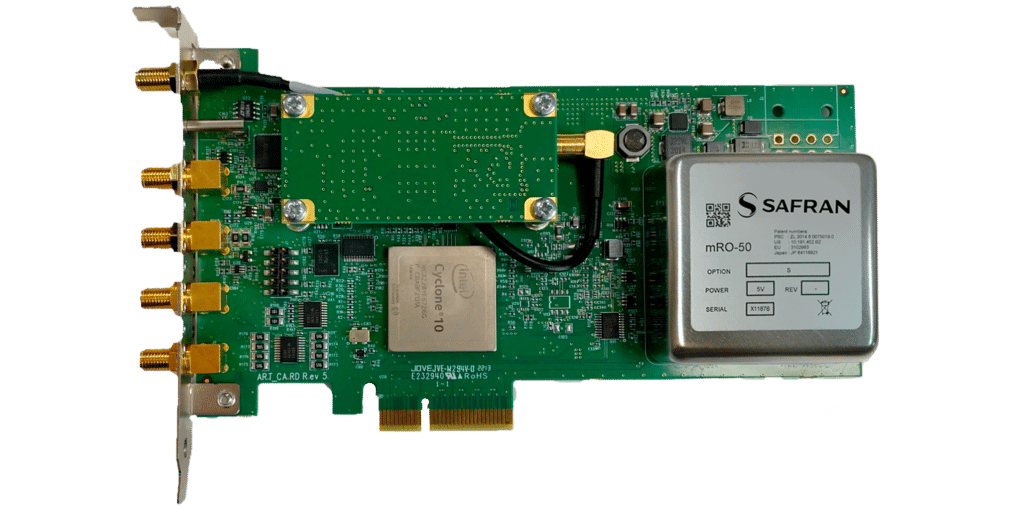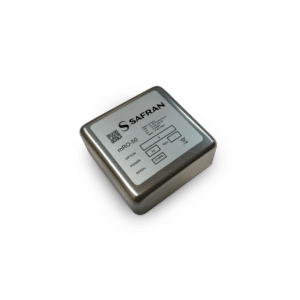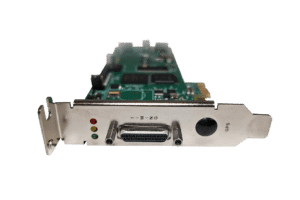ART Card
Atomic Reference Timing Card for time servers and precise synchronization
The ART Card is the first Timing Card leveraging the small SWaP of the mR0-50 Rubidium oscillator on a PCle board.
The ART Card has been designed with scabilability, future-proofness and seamless integration in mind. Therefore it is fully open-source and operated by an hardware-agnostic monitoring and disciplining software stack.
The ART Card is a proven enabling solution to build your own high performance Network Time Server. It was developed in collaboration with Meta for the Open Compute Project.
The Open Compute Project (OCP) initiated the Time Appliances Project (TAP) dedicated to time in datacenters. This project aims to provide a platform to bring together, discuss, standardize and share technologies and solutions across industries.
TAP aims to support the development of a PTPPrecision Time Protocol is a protocol used to synchronize clocks throughout a computer network. On a LAN network, PTP can enable the clocks on each server to be synchronized within a sub-microsecond range, thus making it suitable for demanding applications that require precise timing and control. PTP is standardized within IEEE-1588v2. profile for datacenter applications and datacenter network infrastructure. This profile will cover time-sensitive applications over OCP-compliant and PTP-aware networking infrastructure such as network switches, network clocks, network interface cards, timing modules & connectors, etc.
USE CASES
- DYO high performance time server, from a COTS linux-based server
- Multi-domain, server-based time distribution, in datacenters
- Time Sensitive Networks (TSN) applications for real-time monitoring and time-stamping applications
REQUEST A QUOTE
FEATURES
- Brings extremely accurate time to linux-based host
- Resilient timing engine, based on:
- Multiple 1 pps/10 MHz references
- Multi-frequency/multi-constellation GNSSGlobal navigation satellite system (GNSS): A general term describing any satellite constellation that provides positioning, navigation, and timing (PNT) services on a global or regional basis. See also receiver
- Highly resilient against GNSS loss, thanks to on-board atomic oscillator
- Fully open-source design and driver
- Easy to integrate in any server with PCIe slot
SPECS
- GNSS L1/L2 or L1/L5 reception
- Holdover (at constant temperature, after 48 h GNSS disciplining) : 2 us per day
- 4 x 1 pps in/out (BNC, TTL 50 Ohms), 2 x 10 MHz in/out (BNC, Sine 6 dBm 50 ohms)
- PCIe 2.0 x 4




